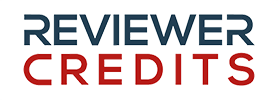Study of the Influence of Lathe Tool Geometry and Machining Parameters on Chip Formation Process
Abstract
The geometric parameters of the lathe tool affect the chip formation rate, the quality of the surface obtained, and other technical and economic indicators of machining. The physical nature of the temperature rise in the cutting zone allows for the regulation of this process by introducing factors that compensate for it. To achieve this, it is necessary to implement a number of measures and conditions for processing each specific material, which will significantly affect the quality of the surface obtained and the tool's durability.
The aim of the study is to investigate the influence of lathe tool geometry on the process of chip formation and removal. To determine the main parameters on which the physical component of the process depends. Investigate the causes and consequences of temperature rise, as well as methods of regulating the temperature in the processing zone.
Downloads
References
Мазур М. П., Внуков Ю. М., Доброскок В. Л., Залога В.О., Новосьолов Ю. К., Якубов Ф. Я. Основи теорії різання матеріалів: Підручник [для вищ. навч. закладів]/За ред. Мазура М. П. – 2-е вид. перероб. і доп. Львів: Новий світ-2000, 2011. 422 с.
Паливода Ю. Є., Дячун А. Є., Лещук Р. Я. Інструментальні матеріали, режими різання, технічне нормування механічної обробки: навчально-методичний посібник. Тернопіль: Тернопільсь-кий національний технічний університет імені Івана Пулюя, 2019. 240 с.
Алексеев Г. А., Аршинов В. А. Конструирование инструмента. Москва: Машиностроение, 1979. 384 с.
Справочник инструментальщика под ред. Ординарцева И. А. Ленинград: Машиностроение, 1987. 845 с.
Downloads
Published
Issue
Section
License
Copyright (c) 2024 Challenges and Issues of Modern Science

This work is licensed under a Creative Commons Attribution 4.0 International License.
All articles published in the journal Challenges and Issues of Modern Science are licensed under the Creative Commons Attribution 4.0 International (CC BY) license. This means that you are free to:
- Share, copy, and redistribute the article in any medium or format
- Adapt, remix, transform, and build upon the article
as long as you provide appropriate credit to the original work, include the authors' names, article title, journal name, and indicate that the work is licensed under CC BY. Any use of the material should not imply endorsement by the authors or the journal.



















